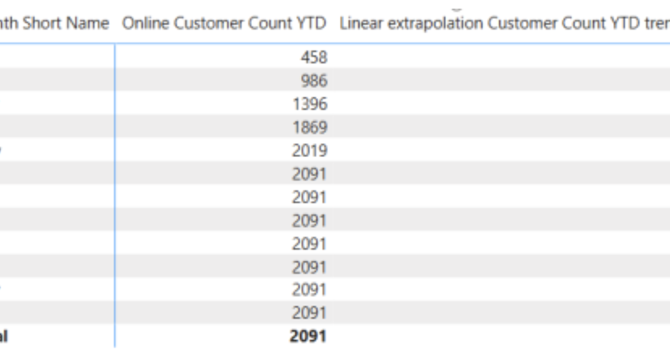Towards Data Science
1M
253

Image Credit: Towards Data Science
How to Develop Complex DAX Expressions
- Developing complex DAX expressions involves understanding requirements, defining calculations, and considering different scenarios.
- Flexibility in DAX measures is crucial to cater to various scenarios, as clients may require different reports based on the same logic.
- Understanding filter context is essential in DAX, as it determines the impact of filters on expression results.
- Intermediary calculations and step-by-step approach aid in comprehending and building complex DAX measures effectively.
- Starting with a table or matrix visualization helps in visualizing intermediary results before finalizing complex DAX expressions.
- Variables and defined base measures play a significant role in developing complex DAX expressions for accurate results.
- Calculating linear extrapolations requires meticulous handling of arithmetic operations and understanding of data context in DAX.
- The development process for calculated columns in DAX follows similar steps with considerations for physical storage and context transition.
- Following a structured development process for complex DAX expressions can enhance efficiency and understanding of filter context.
- Maintaining simplicity and minimizing complexity while handling complex DAX expressions is a hallmark of a proficient developer.
Read Full Article
13 Likes
For uninterrupted reading, download the app